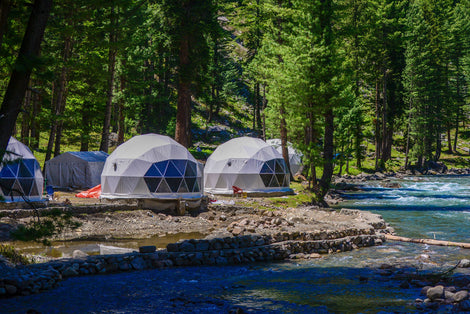Power Distribution Problems in Battery Systems
Power distribution is the quiet backbone of any off-grid solar setup. When it's working right, everything runs smoothly — you can cook, cool, charge, and relax without issues. But when distribution gets messy, problems start stacking fast. Your batteries might be full, but lights flicker, devices trip, or appliances shut down without warning. These aren’t just small annoyances. They wear down your system and shorten its lifespan.
One of the biggest things shaping performance is how your inverter battery kit distributes energy. That’s the heart of your power system. A solid kit should take stored battery power and deliver it evenly across your home or property. But when there's a hiccup in how power is managed, small problems grow quickly. Knowing what usually goes wrong and why helps you keep things running right.
Common Power Distribution Problems
Off-grid systems can develop power problems gradually or without warning. Some of these issues creep in over time and make your setup less efficient. Others happen suddenly and cause real trouble. In both cases, they make your system work harder than it should, stressing parts that weren’t built for it.
Here are a few typical power distribution problems:
- Voltage drops – Cables that are too thin or too long can cause voltage to fall below usable levels. You'll notice this in weaker appliance performance or flickering lights.
- Unbalanced loads – Heavier loads on one side of a split-phase system leave the other side underused. That imbalance causes heat buildup and strains the inverter.
- Incompatible or low-quality components – When parts don’t work well together, you get surges, electrical noise, or weaker performance over time.
- Heat build-up – Narrow cables or tight enclosures can trap heat during current flow. That leads to insulation damage and lower system output.
- Battery problems – When battery cells are unbalanced or charging unevenly, the inverter gets unstable power. That shows up in poor performance across your setup.
These issues don’t always show up early. Someone might install solar in spring and enjoy strong performance through summer. But come fall, as sunlight fades and energy use rises, cracks begin to appear. Regular checks make a real difference.
A strong inverter battery kit can lower the risk of these problems. Still, it's important to think about component layout and how your setup grows with your energy needs.
Understanding Your Inverter Battery Kit
An inverter battery kit might seem self-explanatory, but what’s in the box and how it all functions matters a lot. It acts as both the brain and backbone of an off-grid solar system. Most contain the following parts: an inverter, battery bank, wiring cables, and sometimes a mounting rack or enclosure.
Each part serves a defined role:
- Inverter – This converts the direct current (DC) from your batteries to alternating current (AC), which powers home appliances. It needs to match both your system voltage and your load demands.
- Batteries – These store your energy. Their size and type affect how long you can go without sun.
- Cables and fuses – These link all parts and carry the electrical current. The right gauge and fuse size helps prevent overheating.
- Charge controller – Some kits include one, which helps the system charge batteries safely. It avoids overcharging, which keeps the batteries healthy longer.
When shopping for a kit, here are a few features worth focusing on:
- Does the inverter cover both peak and average loads?
- Is the inverter a pure sine wave model? Pure sine wave inverters tend to have better compatibility with sensitive appliances.
- Can the system expand if your power use increases?
- Does the kit come with safety protections like circuit breakers and disconnect switches?
The better your understanding of how these parts connect and operate, the easier it is to avoid missteps. Picking mismatched or undersized equipment leads to more repairs and higher costs in the long run. A well-balanced and properly sized inverter battery kit will work reliably under load without extra strain.
Solutions to Power Distribution Problems
Once you know where things tend to go wrong, it becomes easier to take steps that avoid or fix those problems. A dependable system starts with good planning and proper installation. Make sure everything is sized right and installed by someone who understands how solar and battery systems work together. But if problems are already bubbling up, such as flickering lights or odd behavior from your inverter battery kit, here’s what to do next:
1. Have a pro check the wiring layout. Poorly sized wires, messy connections, or loose terminals can all lead to trouble. An experienced tech can find things that others miss and save you future headaches.
2. Balance your loads. Don’t put all your big appliances on the same circuit or portion of the system. A well-balanced load reduces the chance of overloading or overheating. That means fewer outages and longer part life.
3. Match your components carefully. Batteries, inverters, and charge controllers need to be built for the same voltage and capacity ranges. Mismatches lead to higher wear and worse overall performance.
4. Install surge protection. Spikes from switching loads or sudden surges, even lightning, can quickly fry gear in an off-grid system. Surge suppressors stop damage before it hits.
5. Keep your energy use realistic. Avoid connecting devices that draw more power than your system was built to deliver. Understanding both daily and peak loads helps you pick the right kit for your needs.
Ongoing maintenance is just as important as setting everything up correctly. Even small issues, such as dust build-up or slightly loose wires, can turn into performance problems. These are common in places that get dry air and temperature swings between day and night. Catching those at the right time saves money and extends the life of your system.
If you notice inconsistent charging, random outages, or parts getting hot, it’s time for expert help. Don’t wait for a full system failure. Every minute your system runs wrong is time taken off its total life.
Maintaining Optimal Performance
After the system works like it should, the next step is to keep it that way. A smooth-running setup can stumble fast when maintenance gets overlooked. Regular upkeep is the simplest way to make sure gear works when you need it most.
Keep an eye on these areas:
- Check and tighten all electrical connections on a set schedule. Loose joints can cause heat and voltage drops.
- Monitor voltage and temperature readings. Many systems have built-in displays that show real-time data. Knowing what’s normal makes it easier to recognize when something’s off.
- Inspect battery terminals and cables. Look for swelling, signs of corrosion, or mismatched charge levels. These signal problems with balance or wear.
- Keep everything clean and ventilated. Dust and blocked airflow raise system temperatures. HEAT is often the silent destroyer in off-grid setups.
- Get a yearly system check from a qualified expert. A thorough inspection can find slow-building issues and resolve them before a costly failure.
Short, routine care keeps your inverter battery kit doing its job. Just like changing oil in a car, regular attention doesn’t mean something’s wrong. It means you’re taking steps to avoid frustration and extra costs later.
Keeping Your Power System Efficient and Reliable
Living off the grid means depending on your system night and day. That system needs to be steady, flexible, and ready through every season of the year. Smooth power distribution makes things easier. If you catch and manage weak spots early on, they won’t grow into costly repair jobs later. Sometimes better performance comes from small changes like shifting loads or updating a component to match new demand.
Your inverter battery kit is a critical factor in how power flows through the setup. If every piece is working together and has been installed for your energy needs, it all runs without stress. But when something’s out of place — from an incorrect battery to loose wiring — the problems ripple through the entire system.
Power distribution issues don’t mean your off-grid plan failed. They simply point out areas that need attention. With regular checkups, expert help, and the right gear, your system stays strong and steady, even as seasons shift or energy use changes.
Ready to keep your off-grid solar setup running smoothly? Rely on Green Vista Living for guidance and quality solutions. Explore how our inverter battery kit can help improve your system’s reliability and use it to store clean energy without the noise or stress.







